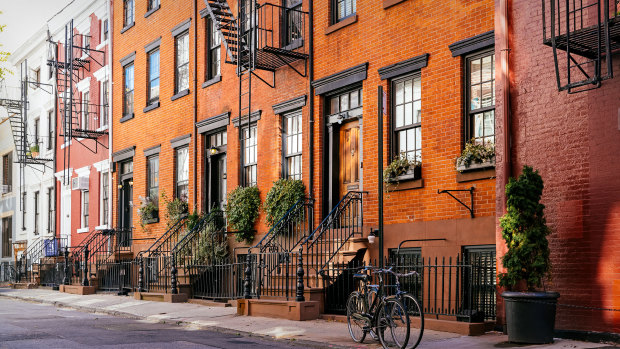
Home prices rose in each of the first five months of the year, and that’s terrible news for home buyers.
The S&P CoreLogic Case Shiller Index showed home prices climbed 1.2% in May from April, or 0.7% seasonally adjusted.
DON’T MISS: 20 Places Where High Mortgage Rates Cost Homebuyers the Most
“The Index highlights housing markets displaying the return of seasonal trends as we progress through the traditionally busy summer season,” George Ratiu, chief economist at Keeping Current Matters, a real estate research firm, said in a statement.
“Following a slowdown during the second half of 2022 and a cooler pace during the winter months, home price momentum has been on an upswing in the first five months of this year.”
To be sure, on an annual basis, home prices dipped 0.5% in May from a year earlier, widening from a 0.1% decrease in April.
But keep in mind that home prices hit record highs last May and June, so the comparison was a bit skewed.
Strong Demand From the Young
The recently monthly increases “underscore the favorable demographics underpinning today’s resilient demand,” Ratiu said. “Even with higher mortgage rates and rising prices, changes in life stages and circumstances are leading many people to look for their first or next home.”
In addition to young first-time buyers, there is buoyant demand among other demographic cohorts too. All that translates to higher home prices.
“The rebound in prices over the past five months has confounded many forecasts made at the onset of the year,” Ratiu notes.
“Real estate analysts and headlines had expected housing markets to slide into a deep recession following last year’s aggressive monetary tightening, coupled with sharp inflation and the attendant surge in mortgage rates.” But they were wrong.
Also, “residential real estate markets remain structurally out-of-balance, with demand far outpacing the limited inventory of available homes, the result of more than a decade of under-building,” Ratiu said.
Compare Best Loan Rates
Economist Sees Sustained Price Increases
“As homebuyers, buoyed by a solid job market and rising wages, accept current mortgage rates as the new normal, even a moderate pace of transactions will keep upward pressure on prices during the peak summer season.”
And prices have room to rise beyond summer, he said. Housing prices soared in most of the 1970s and ‘80s, a period marked by high inflation, sharp monetary tightening, and several recessions, Ratiu noted. Of course, that’s not far from today’s environment.
The impact of price increases on potential home buyers isn’t pretty. The median existing-home sales price registered $410,200 in June, the second-highest in history, according to the National Association of Realtors.
Say you bought a home at that price today with a 30-year, 7% fixed-rate mortgage and put 20% down. Your monthly payment for principal and interest would total $2,183, according to Bankrate.
And keep in mind, that’s before property taxes, homeowner’s insurance and other fees.
That’s a hefty burden for young people early in their careers.







